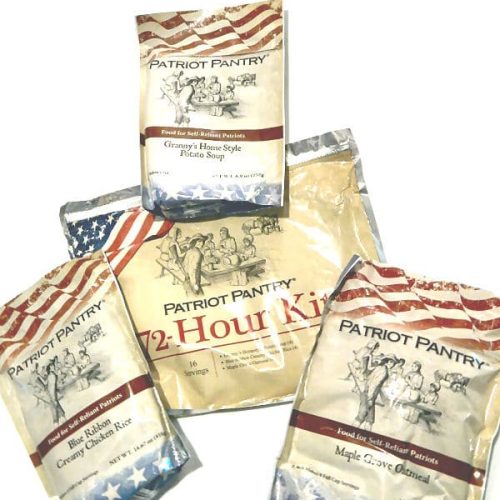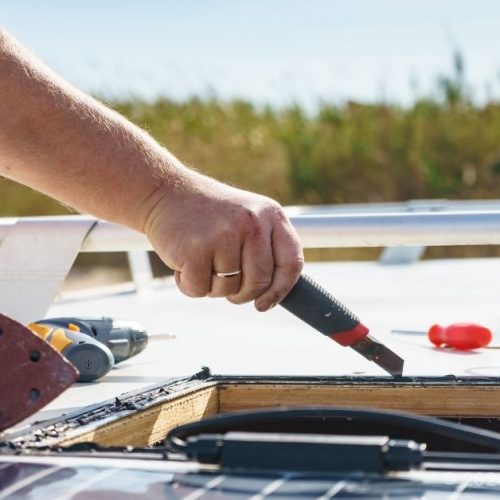The world is experiencing an unprecedented period of inflation. This economic phenomenon has increased the prices of homes, energy, consumer goods, and even the food we eat.
Overall, prices have risen by 6.4% since the beginning of 2022. You might see this number and think the change in cost should be manageable, but when it comes to the cost of food, the situation is much more dire.
Although food prices typically increase by about 2% every year, last year saw an 11.4% jump in food costs, an increase few families can bear. Considering the overall rise in prices across the board, paying more at the grocery store for something as essential as food is especially challenging.
As a result, many Americans are considering what they can do to cut costs. Whether they plan to use more public transportation, eat out less, add a mobile chicken coop, or even grow their own food, there are many ways people can save money in the face of inflation.
In fact, about 30% of households in the U.S. already produce some of their own food. And you may be surprised to learn that the average home garden produces up to $600 of free produce yearly!
Monthly grocery costs have risen for everyone, but growing your own food offers a real solution to this problem. And cultivating food at home isn’t as complicated as you might think. With the proper guidance, even beginners can grow their own food. Follow these steps to get started.
Step #1: Research Your Climate and Soil
No two plots of land are created equal. Everything from climate to soil composition and local pests affects how plants grow, and you need to understand them all before getting started.
First, think about your sun exposure and access to water. In addition to quality soil, these are two essential elements of growing fruits and vegetables. These plants will need at least 8 hours of full sun daily. You’ll also want to make sure there’s fresh water nearby so you can water your plants every other day or more, depending on how hot and sunny it is.
Good growing soil combines sand and clay and has few rocks or other impediments to growth. If you want to learn about your soil composition, you can do a soil test with a simple home kit and send it to a lab.
The advantage of getting more information about your soil is learning what nutrients you need to add to make the ground an ideal growing environment. Although, this step isn‘t necessary for beginner gardeners.
Step #2: Create a Garden
Gardens come in many shapes and sizes. The most popular option is a ground-level garden protected by a small fence or chicken wire, but raised beds and container gardens are popular, too.
Some growers opt for raised and container gardens because of protection from pests. Most critters can’t jump into gardens elevated off the ground, ensuring the rabbits won’t enjoy your salad greens before you do! But there are drawbacks to these gardens, too. They tend to dry out faster and require frequent watering. Raised beds or containers can also limit the size and amount of fruits or veggies you can plant.
No matter which type of garden you choose, prepare the soil by adding some fresh topsoil and compost. If you did a soil analysis, you could add additional vitamins and minerals as you see fit. Then, use a hoe or rototillers to turn the ground and make the soil fluffy and loose. Properly preparing the soil makes planting a breeze!
Step #3: Plant the Garden
Speaking of planting, you must decide whether you want to use established plants or seeds. Established plants are much more expensive, and their origins sometimes need to be determined. However, they do shorten the growing period so you can begin enjoying your produce faster.
Seeds are far less expensive, but they’re more challenging to start, especially outside. Many gardeners start their seedlings in egg cartons or other small containers before the growing season begins. Transplant your seedlings into the garden after the last frost.
Once everything is in the ground, all that’s left is to water the plants and keep your gardens free of weeds and pests. Simple, right?
Step #4: Maintain the Garden
While preparing the garden and planting the produce are the most labor-intensive steps of growing your own food, taking care of the fruits and vegetables with regular watering and pest management is just as important.
Chickens are an excellent addition to any home garden. They provide all-important pest management, as they love to eat bugs and weeds from rows of thriving fruits and vegetables. These animals are also an excellent nitrogen source because their feces fertilize the soil as they pick at the pests.
If you have a fenced-in yard or large property, allowing the chickens to roam free will increase egg production and help your garden. But if your plants need a more concentrated dose of chicken assistance, consider using a mobile coop and pen to keep them in the garden’s immediate area. Even if you do let chickens roam free, understand that there can be predators about so it’s vital to know about woven mesh and keep a safe, fenced section of land to keep your chickens safe when you aren’t there to monitor them.
Movable coops stay cleaner longer and always give the chickens a fresh feeding source. And chickens also provide a renewable food source, eggs. You may also breed and slaughter chickens for meat.
Step #4: Harvest and Enjoy
The best part! Harvesting your fruits and veggies is a fulfilling task. It makes all your hard work worth it and reminds you of the Earth’s boundless provision.
Research the best times to harvest each of your plants. They will reach maturity at different times, and the key is to pick them when they’re as ripe as possible. If you can’t eat them when picked, consider preserving them by canning or freezing. This way, you can have fresh, home-grown produce long after the growing season ends.
Cooking with the fresh produce you’ve grown is the same as cooking with fruits and veggies from the grocery store. The only difference is the food you grow tastes so much better! Research recipes that use what you’ve grown to maximize the value of your harvest. You might surprise yourself and find a new favorite meal!
Despite inflation’s many challenges, this time has taught many people how to do more with less. That’s what growing your own food is all about. Less out of pocket, and more in your stomach. Less greenhouse gasses and more clear skies. And less time worrying about what you’ll eat and more time enjoying the food you’ve grown.






